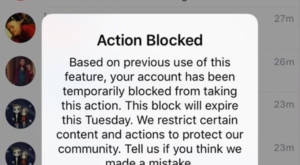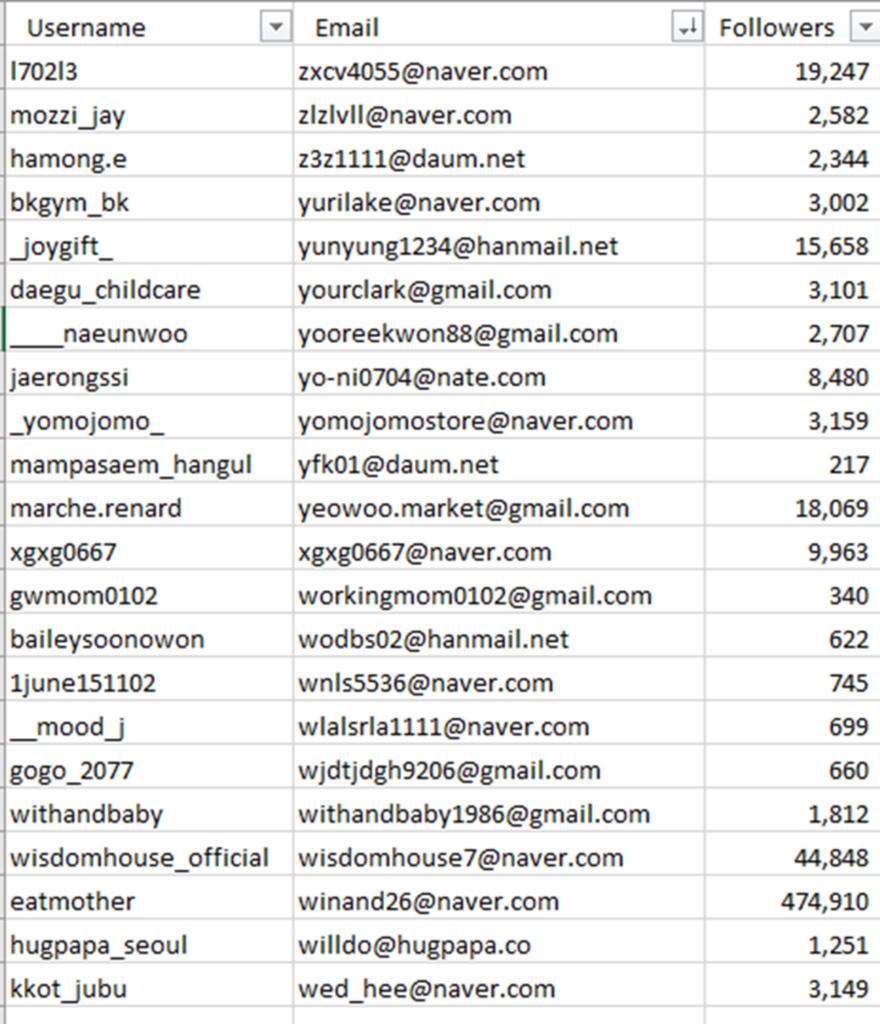Instagram AI engine that (1) deep-searches for micro-influencers and their contact info, and (2) send automated business proposal email/message.
#AI/DATA #Influencer Marketing #B2B #WEB
#FAILED

B2Z — Instagram AI engine that (1) deep-searches for micro-influencers and their contact info, and (2) send automated business proposal email/message.
Starting in the mid-2010’s, influencer sponsorship had become one of the hottest and most powerful marketing tactics, and every product companies wanted to get involved in one. This paradigm shift had given rise to the influencer/digital creator market, and is still a very strong industry with lots of potential to grow.
The problem at the time, was that the mega-influencers with millions of followers charged at least tens of thousands of dollars for a single post sponsorship, and although the efficacy of influencer sponsorship is without a doubt, a powerful one, the marketing costs were becoming unaffordable. Big-sized corporations had no trouble with setting aside top dollars for their campaigns, but small, growing companies struggled to initiate such campaign, thus making the influencer sponsorship a luxury only large companies can enjoy.
With this budgeting struggle, many small-to-mid-sized companies switched their eyes to influencers with relatively lower follower counts (we call these ‘micro-influencers’) between 5,000 ~ 50,000 followers. The ‘micro-influencer’ sponsorship presented two distinct advantages compared to the traditional mega-influencer sponsorships:
Take a look at this comparison below, for example:
Just by looking at the two comparisons, micro-influencer sponsorship was not only cheaper, but its efficacy per dollar was also 5 times better than that of mega-influencers. With such calculations, it was much better to initiate sponsorship with 10 micro-influencers than with one mega-influencer.
With such phenomenon, a new ‘micro-influencer’ sponsorship market had arisen with big frenzy.
Although the efficacy & the efficiency of micro-influencer sponsorship was proven and widely recognized, (1) recruiting appropriate influencers and (2) securing sponsorship deal was very cumbersome.
To establish a sponsorship deal, company marketers had to individually (1) search for influencers who were a great match to their product (if the company is selling men’s clothing, they can’t partner with a women’s fashion oriented influencer, of course), and (2) send out individual DM to each of the prospective candidates to offer a sponsorship deal.
Searching for influencers were hard thing to do already, but the Instagram’s DM filtering policy made it even harder for marketers to do their jobs. Basically, the marketers could not send repeated, similar DMs to multiple people at the same time, which meant that their ‘sponsorship offer’ messages had to be carefully tailored to each and every one of the prospective influencers they wanted to establish a sponsorship deal with, costing huge time and effort.

While investigating the industry, we came up with the following hypothesis.
- If we can automatically search for influencers with matching industries,
- and collect their email/phone number (communication channel outside of Instagram DM)
- Shouldn’t the marketers have an easier job to send sponsorship offers?
Within three weeks, we have contracted with an outside software engineer team to build our first scraper engine prototype with the following core features:

Although the first prototype was very slow to operate (took about 10 minutes to collect about 100 influencer), we were able to achieve 85% accuracy in terms of finding the right influencers for each industry we specified (which we later confirmed through a technical PoC).
The scraper prototype seemed to work, but we needed to validate the following:
Along with getting answers to the questions above, we also needed to build reference/case-results (to add credibility), should we decide to launch our product to the public.
With these agenda in mind, we have recruited three companies that sold (1) dietary supplement, (2) cosmetics, and (3) COVID masks for infants to conduct our PoC test. We provided our prototype for free to the marketing team of each companies, and monitored the performance result of their sponsorship recruitment campaign throughout one month.
The quantitative data presented were very positive, with no statistically significant difference between Instagram DM and email.
Sample Size (# of influencers who received sponsorship offer):
2,000 (Email: 1,300 / DM: 700)
Response rate after receiving sponsorship offer:
Email: 34% / DM: 31% (statistically insignificant difference)
Conversion rate of sponsorship contract:
Email: 11% / DM: 13% (statistically insignificant difference)
Marketers were willing to pay to use our product at given prices:
From this technical PoC, we have concluded that:
Now that we have confirmed that our ‘email reach out’ method is effective, it was time to set up a proper business model to monetize from our product.
For this, we initially ideated into two different ways to deliver our product to our target customers:
The problem we quickly realized after some research, was that ‘selling direct contact information and or access to contact information’ was deemed illegal. Basically, both of the business models we have initially ideated became unfeasible, and we had to look for other ways to monetize off of this amazing product.
Our first instinct was to package our product as a ‘scraper’ product.
The pro would be very obvious in the realm that we could monetize off of our product in a perfectly legal way (as we would be simply selling ‘software’ that would enable users to scrape data at their own responsibility).
The con of such method was a bit more delicate though. After doing some research, it was very apparent that the perceived value of ‘scraper’ software was very low amongst our target customers, regardless of what specific data the ‘scraper’ collected (people did not recognize that ‘scraper’ software is something very valuable, and actively avoided paying top-dollars for such type of product).
We estimated that we can only charge around $5 ~ 10/month for the product, should we want to deliver and market our product as a ‘scraper’ software. As we already had some preliminary data about how much our target market would be willing to pay to use our product, selling it as a ‘scraper’ would mean that we would have to purposely undervalue our product, and it did not seem like the smartest direction we should head towards.
After giving more thoughts, we have learned that although it is illegal to directly provide (or give access to) contact data, it is perfectly legal to send targeted messages/emails on the behalf of customers. Basically, we could send the emails, but we just had to make sure that our customers didn’t have direct access to the contact information data list.
With this in mind, we decided to package our product as an ‘agency service’, where we would provide a full suite of sponsorship recruitment service ranging from (1) finding list of appropriate influencers by industries, (2) gathering their email addresses and (3) sending mass, automated sponsorship emails to the respective lists on the behalf of the marketers. Thankfully, perceived value for ‘agency service’ was significantly higher than that of a mere ‘scraper’ SaaS product, and the legality issue was completely solved.
We have (1) proven the efficacy of our product, (2) witnessed the willingness to pay, and (3) devised a clever and legal business model with high perceived value. Now it was time to build an MVP landing page and start testing and monetizing.
Similar to how we did with ‘Pickmate (drop-shipping data miner)’, although we had further plans to develop an ‘automated platform’ version of our product in the future, we decided to stay lean and conduct a market-demand test before actually hiring an expensive engineering team.
As for this reason, we built and published a landing page website that (1) introduced our agency service, (2) included a CTA button (request demo) , and (3) automatically redirected customers to live chat (or our CS email).

Should it be clear from our prototype test that our customers are wanting our product, and they are paying for it, then we’ll go ahead and fix the UX & usability issues by building an actual platform.
Using the landing page + live chat/demo prototype, we beta-launched our product to test the market demand. Our customers were (1) directed to our landing page, (2) learned about our product and data, (3) requested demo, (4) paid for our agency service, and (5) had their sponsorship offer emails sent out to appropriate influencers.
To infiltrate our initial target market, we focused on cold-mailing method.
Gather email address through online seller related communities
At the time, sales partnership through influencer sponsorship was very popular. Many small-to-mid-sized business owners and marketers gathered around ‘online seller’ communities, and there were already numerous communities that were dedicated to connecting influencers and merchants who wanted to strike sponsorship deals.
Many of these communities included posts where marketers were recruiting influencer candidates who wanted to take part in their sales partnership, and each posts clearly outlined the call-back numbers and email addresses of the marketer in charge.
We found our lead collection opportunity here, and we created a quick and simple crawling software to scrape the email addresses of such posts in bulk. Within 2 days, we were able to collect over 500 email addresses of marketers and business owners who were actively looking to set up influencer sponsorship.
Cold-Mailing Campaign
Using the email addresses we have collected, we sent out a bulk of cold-mails to introduce our agency service. All of the 500 email addresses had been successfully sent away, with zero delivery failure.
Throughout the first one month of our market demand test:

From the quantitative performance data, we were able to draw out the following evaluation:
In conclusion, the one month of market demand test has produced positive qualitative data that indicated a strong performance of our MVP, thus confirming our Product-Market-Fit hypotheses. We have evaluated that this product is worth allocating more resources, and made further efforts to improve our product features and delivery method.
We decided to hire full-time engineering team to create an official ‘platform’ version of the product.
However, contrary to the ‘Pickmate’ case, the CEO was unable to secure adequate venture capital funding of this project. As a team, we put collective efforts into the fundraising initiative, but the runway has melted away before we could take this product further.
With zero balance to pay the salaries, our team quickly disintegrated and we had to call for a complete stop for this project. This was one of those sad cases where although the product had performed well with empirical data to support, the business itself failed due to funding and budgeting issue.
To me, it served as another reminder to get the budgeting in control before initiating a business/product cycle with blind hopes for better future.